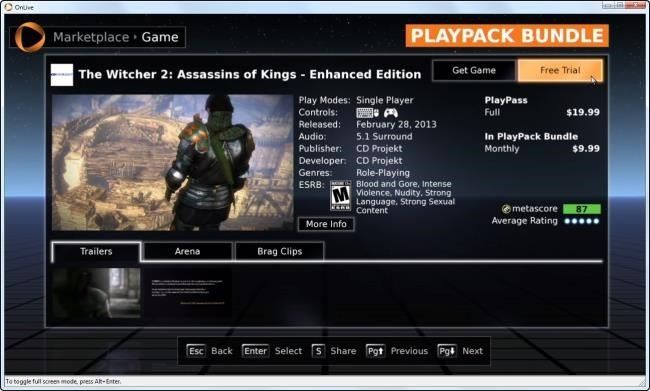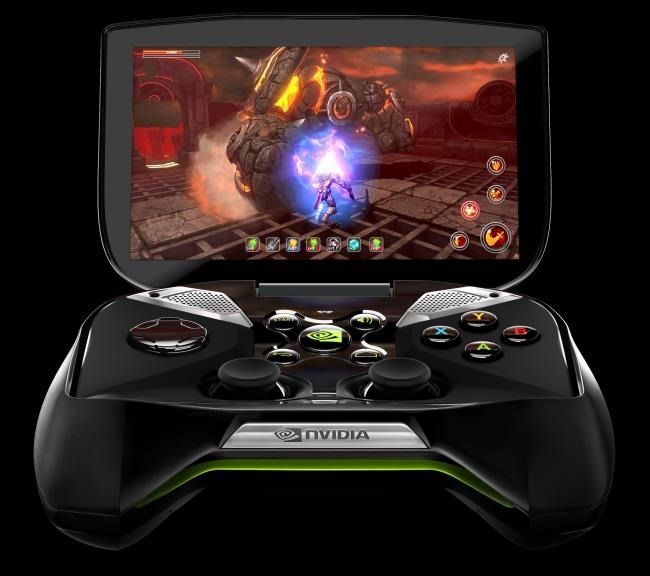Quick Links
"Cloud gaming" has been a tech buzzword for years. The idea is that we'll no longer need gaming PCs or consoles with powerful graphics hardware. All the heavy lifting will be done "in the cloud."
Cloud gaming has much in common with streaming videos. Essentially, the cloud-gaming server runs a game and streams a video of the gameplay to you. Your keyboard, mouse, and controller input actions are sent over the network to the cloud gaming server.
The remote server does all the heavy work, while your computer just receives streaming video (and audio) and sends input commands. Essentially, cloud gaming is like a streaming video service, but interactive.
Theoretical Advantages to Cloud Gaming
In theory, cloud gaming has a lot going for it:
- No Need for Expensive Hardware Investments or Upgrades - With cloud gaming, you wouldn't need to upgrade your PC or console. Instead of buying an expensive gaming hardware, you'd just use your existing hardware. You could also buy a cheap streaming box and controller that plugs into your television and home network.
- Play Games on Any OS or Device - The majority of high-end, non-mobile games are currently chained to PCs (often Windows) or consoles. Cloud gaming would allow games to become more platform-independent, allowing PCs and tablets running Mac, Linux, Android, iOS, Chrome OS, Windows RT, and other operating systems to play games that might otherwise only run on Windows.
- Integrate Gaming Into TVs and Other Devices - Television manufacturers could integrate support for cloud-gaming services into their smart TVs. The TV wouldn't need any powerful, expensive gaming hardware -- any TV with the correct software and a controller could work for gaming without any additional boxes required. Some smart TVs already include this feature via their OnLive integration.
- Instant Playing - Some games may require a download of 10GB, 20GB, or even more before you can play them. Cloud gaming would allow you to start playing games instantly, as the server already has the game installed and can start playing it immediately.
- Easy Spectating - Cloud gaming services would allow for very easy spectating of games, such as professional gaming matches. Spectators wouldn't need the game installed, as the video stream could be easily duplicated for many users.
- DRM - If games ran on remote servers instead of your own computer, they'd be almost impossible to pirate. This makes cloud gaming an attractive form of DRM to publishers, if not to gamers.
Disadvantages to Cloud Gaming
However, there are some significant downsides to cloud gaming:
- Video Compression - Just as videos we watch on YouTube or Netflix are compressed to make them take up less bandwidth, the gameplay "video" you receive from a cloud-gaming service is compressed. It won't be as sharp and high-detail as what could be rendered by a high-end gaming PC. However, the compressed video you receive may look better than a game rendered at lower detail locally.
- Bandwidth - Cloud gaming services require a large amount of bandwidth. Playing a game on OnLive may use more than 3GB per hour in bandwidth. If you have bandwidth caps on your Internet connection, this could be a serious problem. If everyone played games using cloud services, bandwidth usage would increase dramatically.
- Latency - There's no getting around it -- games can react to your actions much more quickly when they're running on your local computer. Reaction time is faster when your mouse movement just has to reach your computer than when it has to travel over an Internet connection, be rendered and compressed, and then travel back to you. Cloud-gaming services will always have more latency than powerful local hardware.
- DRM - Publishers love the DRM results of cloud gaming, but many gamers would be at a disadvantage if cloud gaming became the primary way to play games. Just as it's impossible for people living in certain areas to play always-online games like Diablo 3, cloud gaming would have even higher Internet connection requirements.
Cloud Gaming Today
Several cloud gaming services are currently in operation. OnLive is the most talked-about one, although its user base is reportedly quite low, with about 1800 users at peak times before its restructuring in August 2012.
While a proper gaming PC or console is superior to the OnLive experience, OnLive works surprisingly well considering the immense technical challenges it faces. Latency and image compression are both noticeable, but aren't anywhere near as bad as you might expect.
If you're interested in trying it, you can download the OnLive client (currently available for Windows, Mac, Android, certain TVs, and a dedicated OnLive Game System device). You can play the full version of each supported game as a "free trial" for 30 minutes, which is more than enough time to see just how well OnLive works.
OnLive's biggest competitor was Gaikai, which used its technology to provide streaming game demos that you could play in your browser -- a much more convenient way to try a game before buying it, with no long downloads required. However, Gaikai was purchased by Sony for $380 million in July 2012 and its streaming game demos are currently offline. Sony will probably do something with Gaikai, and rumors indicate they may use Gaikai to provide instant streaming demos for PlayStation 4 games. Other rumors indicate that they could use Gaikai to stream PlayStation 3 games, offering backwards compatibility without the PS4 itself having the ability to play PS3 games.
Is It the Future?
So far, cloud gaming has failed to really catch on, as OnLive's user numbers show us. However, Sony's purchase of Gaikai demonstrates that big names are interested in this technology.
NVIDIA is currently working on Project Shield, an Android-powered handheld game console with the ability to stream PC games from your PC -- assuming the PC has a powerful enough NVIDIA graphics card. This would allow you to have a single gaming PC and use its hardware to play games wirelessly on a handheld game console and your TV. Latency would be much lower because you're streaming from your home network, and bandwidth caps wouldn't matter if it was all local. NVIDIA seems to be betting on this vision, which could offer some of the benefits of cloud gaming without some of the drawbacks -- as long as you have powerful enough PC gaming hardware.
Valve, developers of the Steam application that defines PC gaming for many people, aren't too keen on cloud gaming. Gabe Newell, who runs Valve, has given his thoughts:
“Let’s say our industry had never done consoles or consumer clients. Even if we just started out with cloud gaming, you’d actually go in the direction of pushing intelligence out to the edge of the network, simply because it’s a great way of caching and saving you on network resources.”
In other words, if all gaming was curently cloud gaming, we'd be moving to local gaming for its many advantages.
OnLive's streaming-only game system costs $99 with a controller, while a forthcoming Ouya with the ability to run local games as well as OnLive games beats it on functionality at the same $99 price point. As local gaming hardware gets cheaper, cloud gaming becomes less attractive.
It's impossible to predict the future. It's clear that OnLive isn't killing gaming PCs or consoles, but Sony made a $380 million bet on cloud gaming and we may see cloud-gaming features in the PS4. Just as tablets haven't killed the PC (in spite of all the media reports otherwise), cloud gaming won't kill local gaming any time soon -- but it may offer an alternative in certain situations.
Image Credit: JD Hancock on Flickr, NVIDIA





